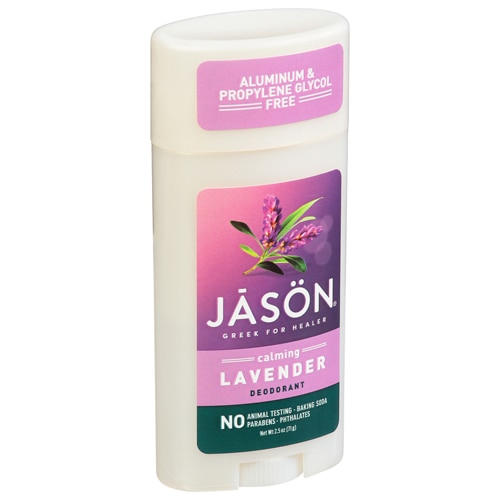A new study raises more concerns about the potential harm of a family of manmade chemicals found in
personal care products.
The
study, published in October 2021 in the research journal Environmental Pollution, attributed 90,761 to 107,283 premature deaths a year of Americans ages 55 to 64 to the group of chemicals, known as
phthalates. The study pegged the annual productivity lost due to those deaths at $39.9 billion to $47.1 billion. Most worrisome were deaths linked to heart disease.
Researchers based these findings on data for more than 5,300 American adults who participated in a national health and nutrition study from 2001 to 2010, and who provided urine samples to detect the presence of phthalates.
“While further studies are needed to corroborate observations and identify mechanisms, regulatory action is urgently needed,” the study’s authors warned.

What are phthalates?
According to the U.S. Centers for Disease Control and Prevention (CDC) and other organizations, phthalates help make plastics more flexible or help prolong the life of fragrances in personal care items. They’re found in hundreds of products, such as soap, body wash, deodorant, shampoo, hair spray, perfume, nail polish, lotion, children’s toys, food packaging and vinyl flooring.
“Nearly everyone in the U.S. is exposed to phthalates, with some studies finding that almost 100 percent of Americans have some level of the substances in their bodies,”
according to the nonprofit Environmental Working Group.
Phthalates’ health effects
Some phthalates have been shown to harm the reproductive systems of animals, the CDC says. The effects of phthalates on humans aren’t clear, though. But evidence of potential dangers continues to emerge:
- A 2021 article in the American Journal of Public Health made the case that phthalates increase children’s risks for learning, attention and behavioral disorders.
- A study published in 2020 in the medical journal JAMA Network Open suggested that exposure to certain phthalates during adolescence might be associated with ADHD-like behavior.
- A study published in 2020 in the Journal of Clinical Endocrinology & Metabolism tied more than 10,000 deaths a year to decreased testosterone levels in adult men due to phthalate exposure.
The Zero Breast Center
says children under age 3 are especially at risk of possible harm from phthalates because of their small, developing bodies and their constant exposure to kids’ products containing phthalates.
“For decades, phthalates have been shown to pose a potential danger to human health because the chemicals can interfere with the function of hormones, which are signaling compounds made in glands that circulate to influence processes throughout the body … . Exposure is believed to occur through buildup of these toxins as consumer products break down and are ingested, with exposure linked to obesity, diabetes, and heart disease,”
according to NYU Langone Health.
NYU Langone environmental health specialist Dr. Leonardo Trasande, lead author of the latest phthalate study, says his team’s research suggests that the toll taken by phthalates is worse than had been thought.
“The evidence is undeniably clear that limiting exposure to toxic phthalates can help safeguard Americans’ physical and financial wellbeing,” Trasande says in a news release.
Russ Hauser, a professor of reproductive physiology and a professor of environmental and occupational epidemiology at Harvard University’s T.H. Chan School of Public Health,
believes — as do many other experts — that the use of phthalates in consumer products should be restricted or banned. He says the use of phthalates should be dialed back in large part because it’s tough for consumers to figure out whether products contain these chemicals.
“I think the goal of phthalate elimination from consumer products is achievable,” Hauser says.
Last year, the state of California
joined 40 countries in banning phthalates from cosmetics and other personal care products. California is the only state to have taken such action.
A nonprofit group called
Safer Chemicals, Healthy Families has joined other organizations in calling for grocery stores and restaurants to get rid of phthalates in food and food packaging. The group says food is the No. 1 source of phthalate exposure, as these chemicals can “easily escape” from food-processing equipment, food packaging and food preparation materials, and then can contaminate food all along the supply chain.
For its part, the industry-backed American Chemical Council
defends the track record of phthalates.
“With more than 50 years of research, phthalates are among the most thoroughly studied family of compounds in the world and have been reviewed by multiple regulatory bodies in the United States,” the council says. “Phthalates are widely used, and yet actual exposure levels are hundreds or thousands of times below levels of concern established by regulatory authorities.”
How to avoid phthalates
Want to avoid phthalates? Follow these six tips from the Westchester County (New York) Department of Health.
- Use refillable glass, porcelain and stainless-steel containers for food and beverages, particularly hot foods and liquids.
- Look at the triangle on the bottom of a plastic container. Staying away from containers marked with a 1 or a 7 PC will decrease the chances that the container is made with phthalates.
- Use glass baby bottles for children who can’t feed themselves yet.
- Do not use plastic containers in microwave ovens.
- Avoid vinyl toys.
- Pick fragrance-free products.




